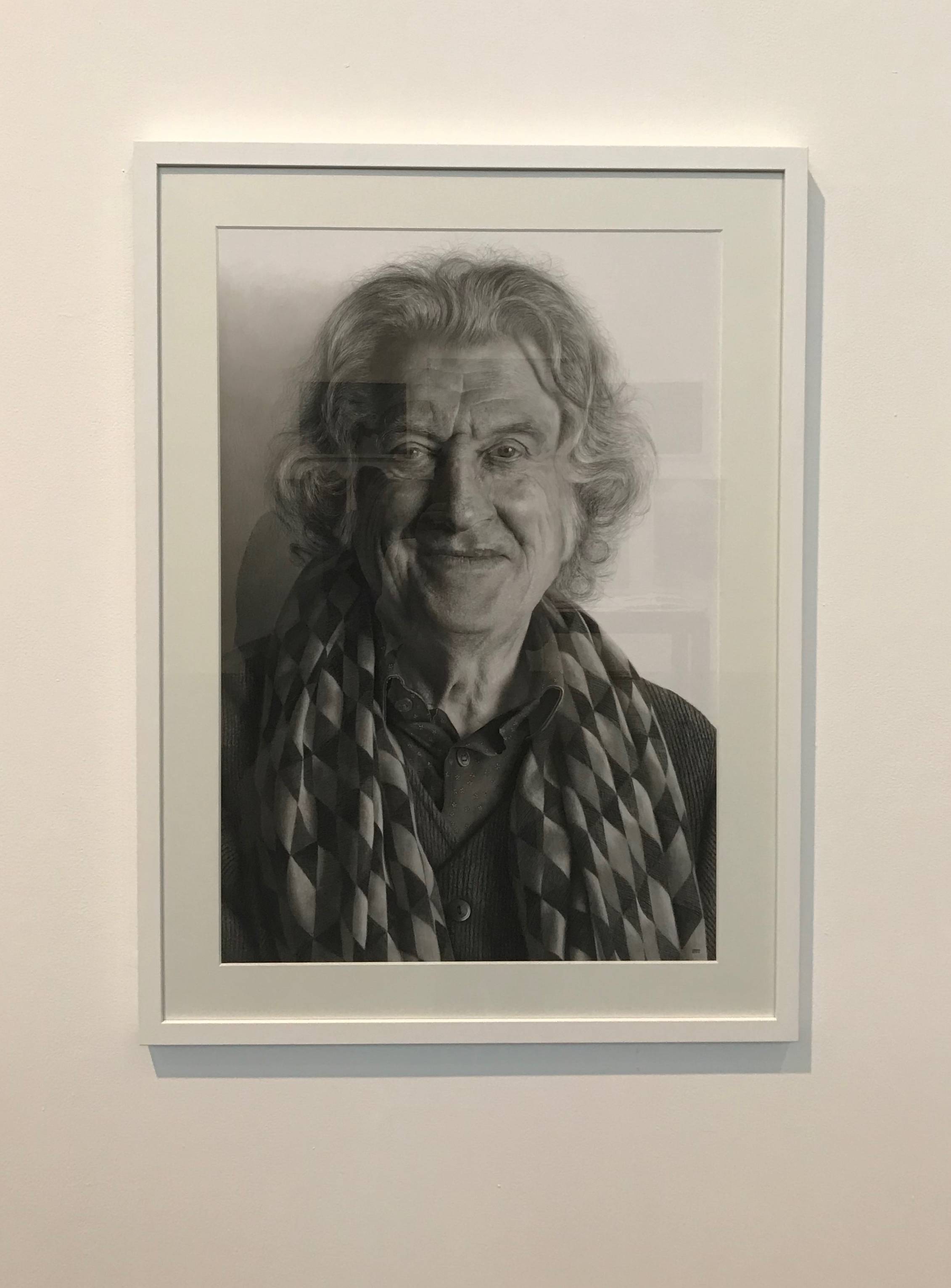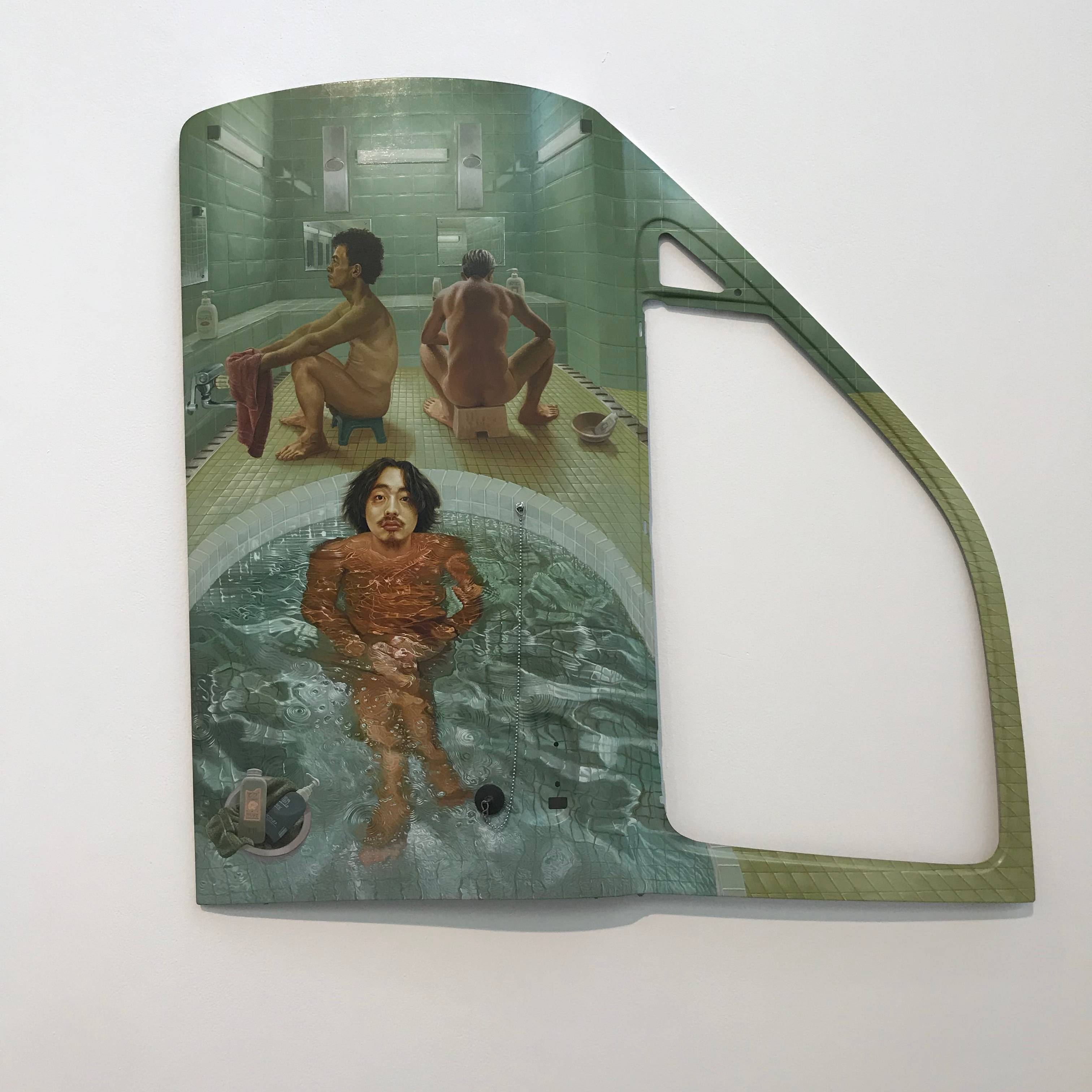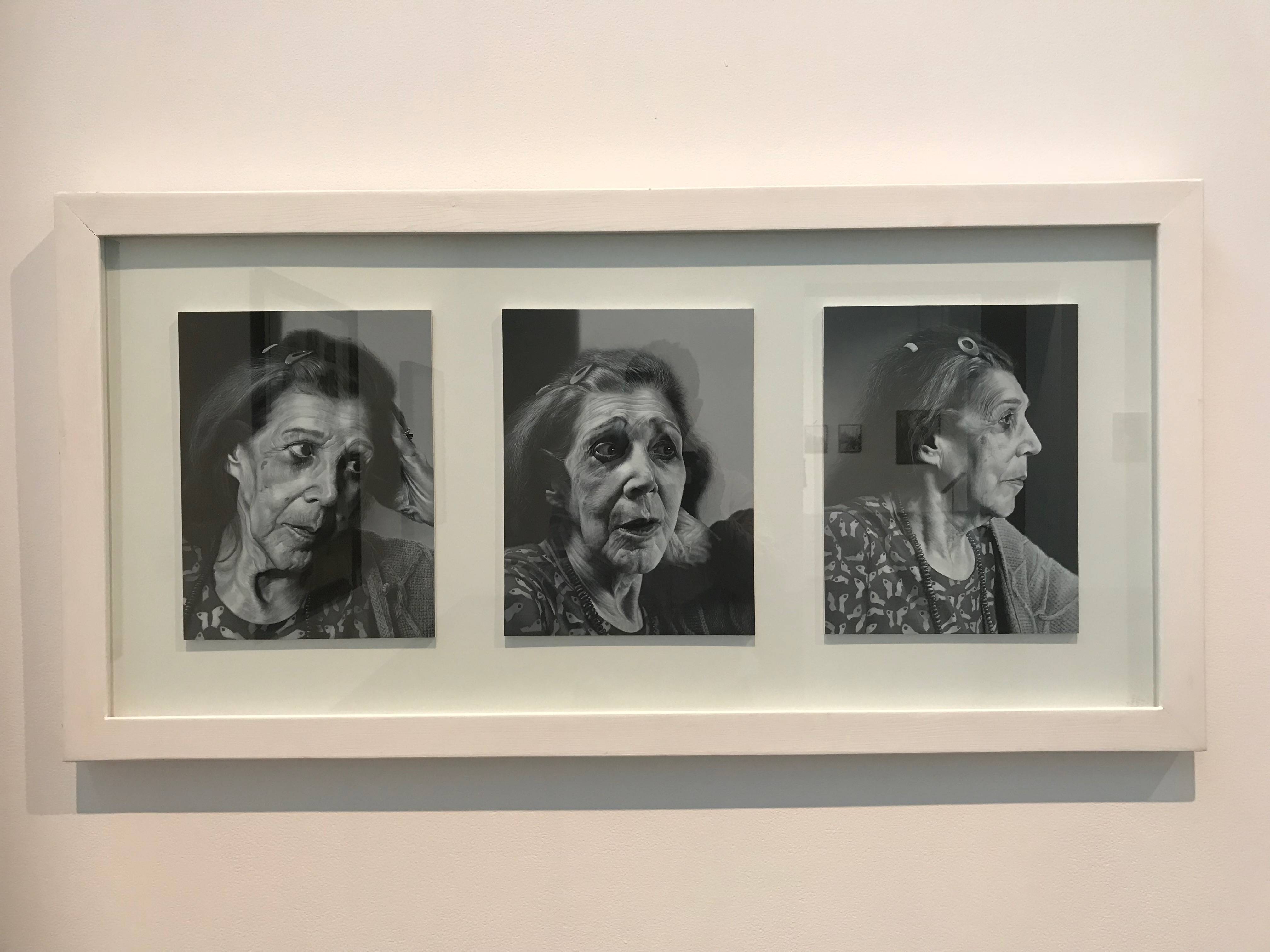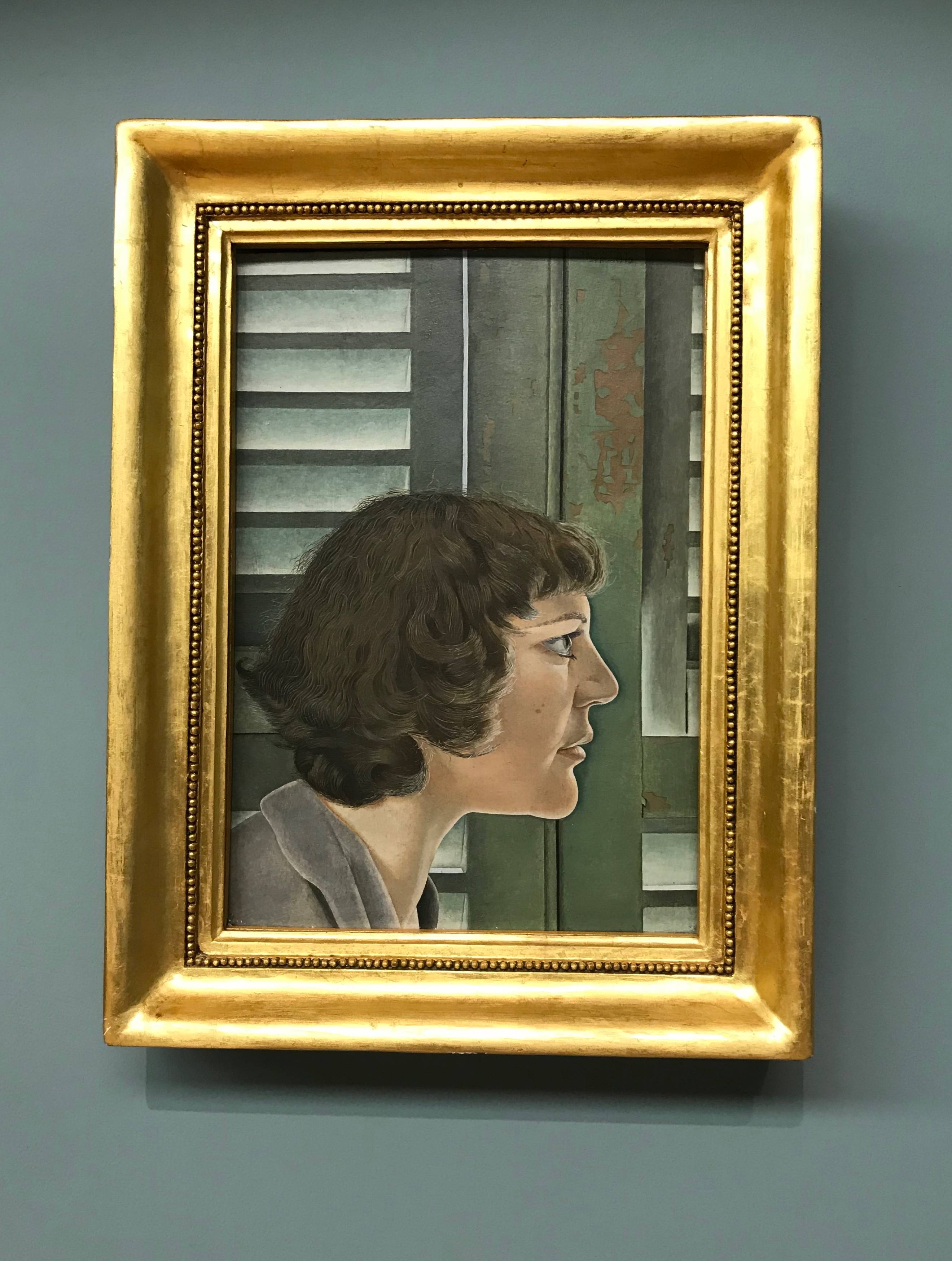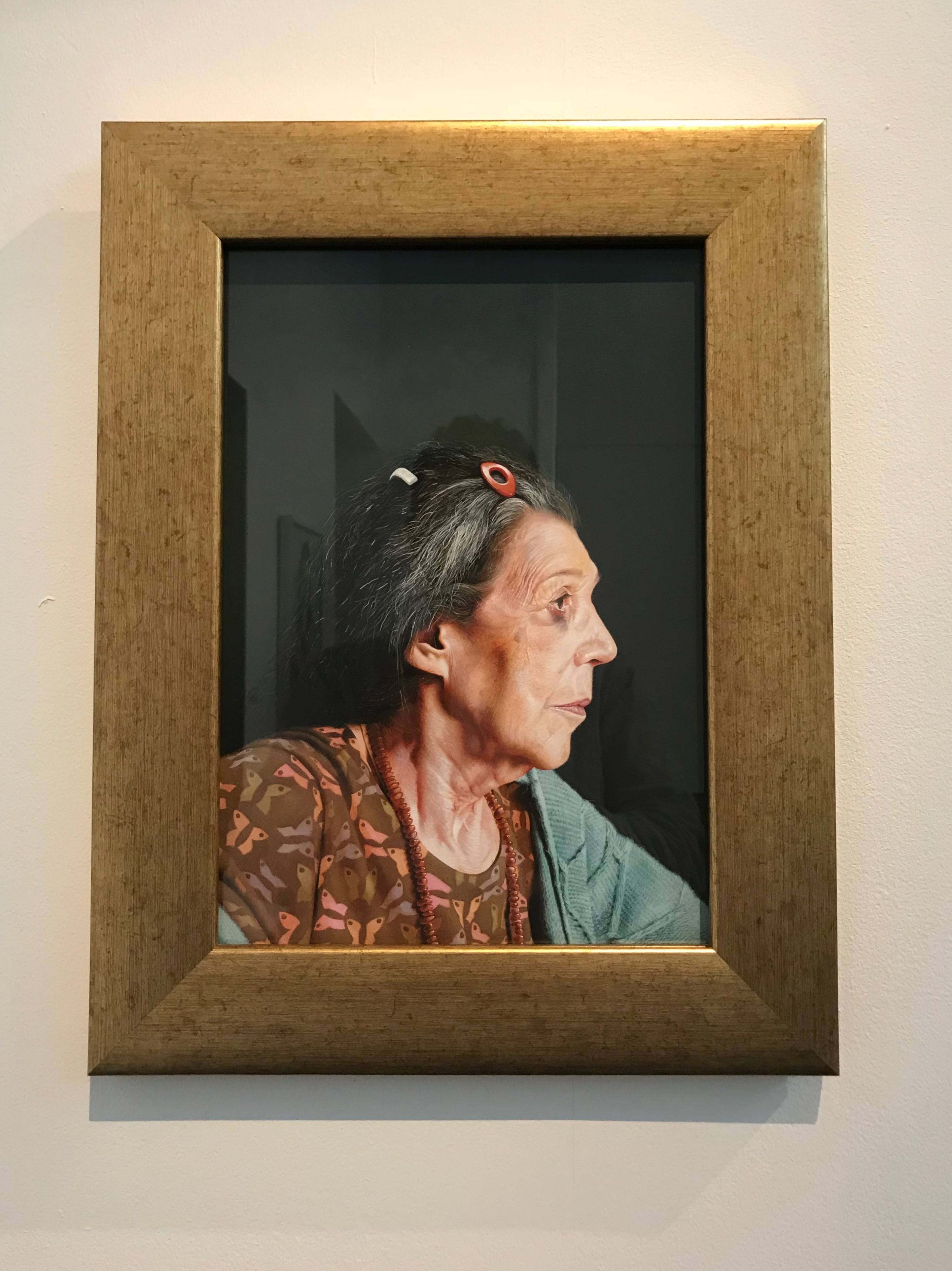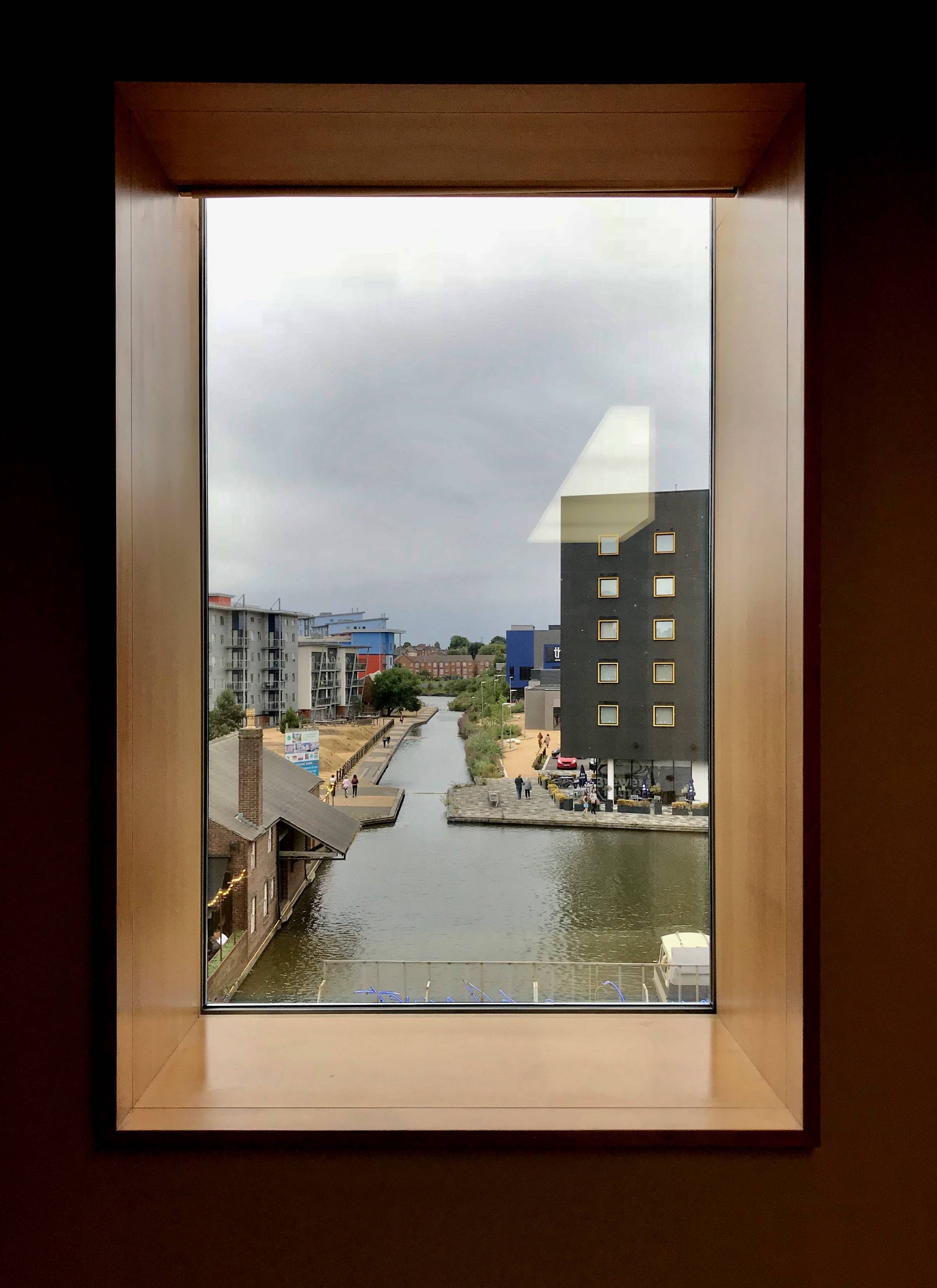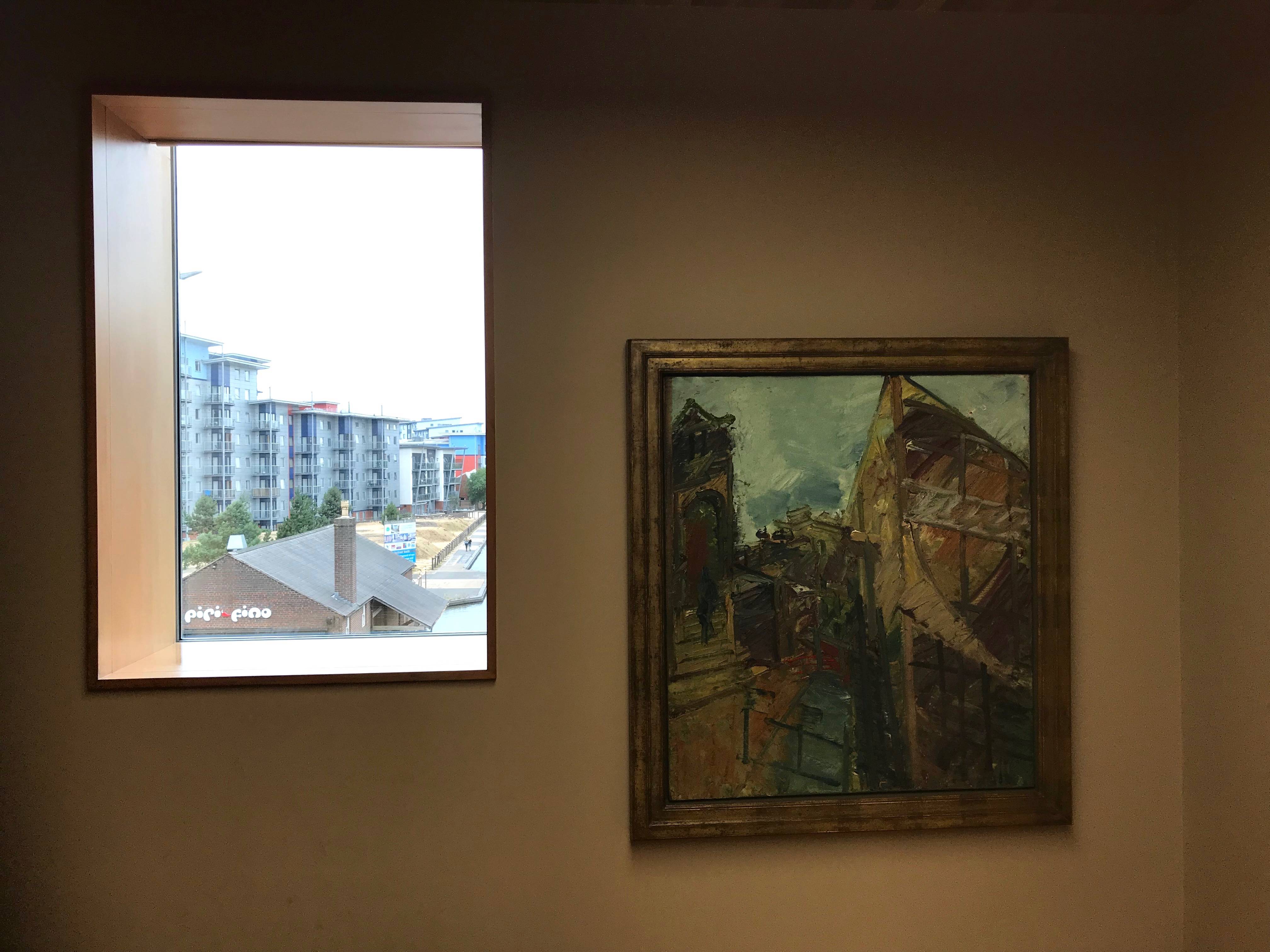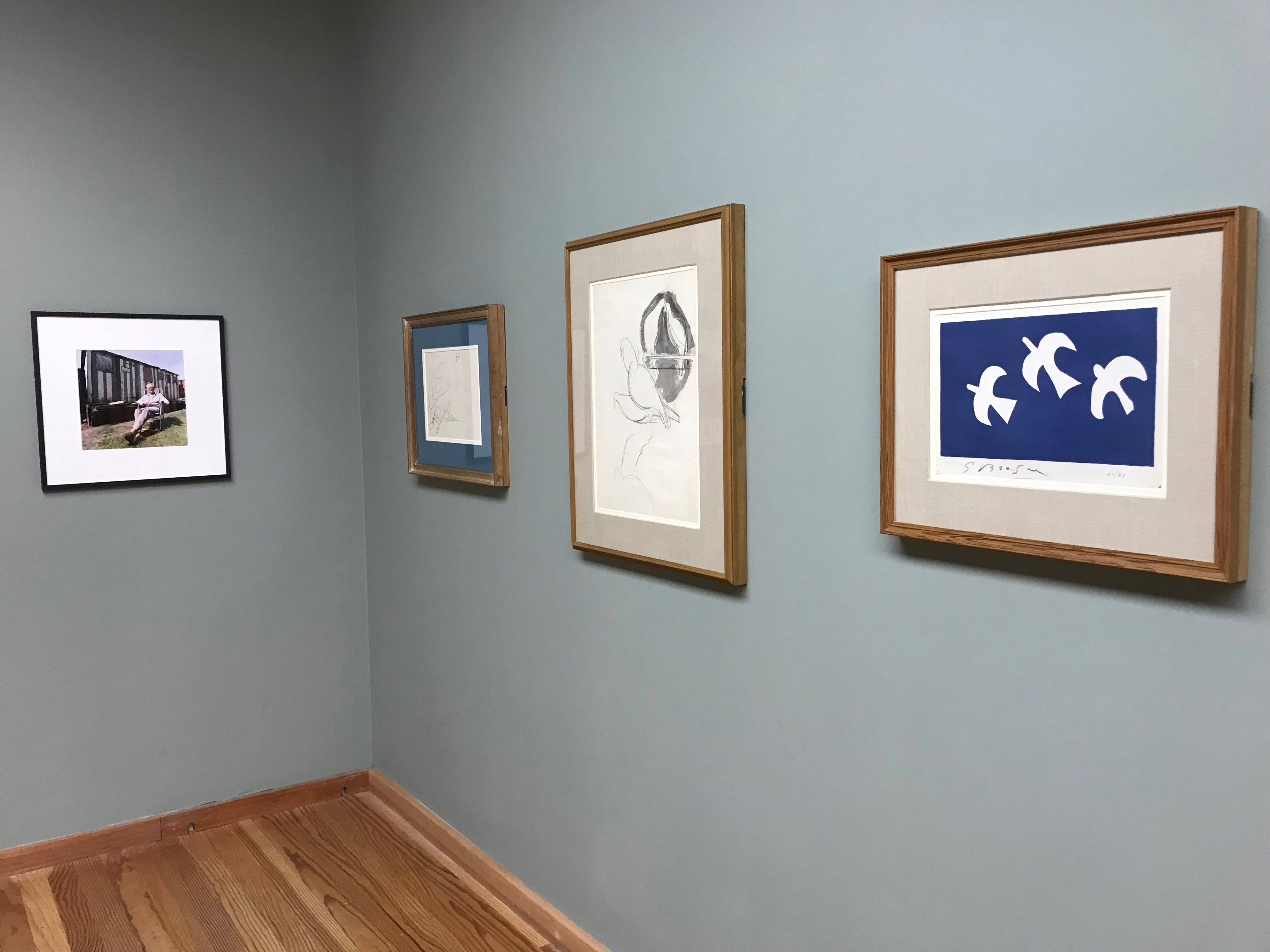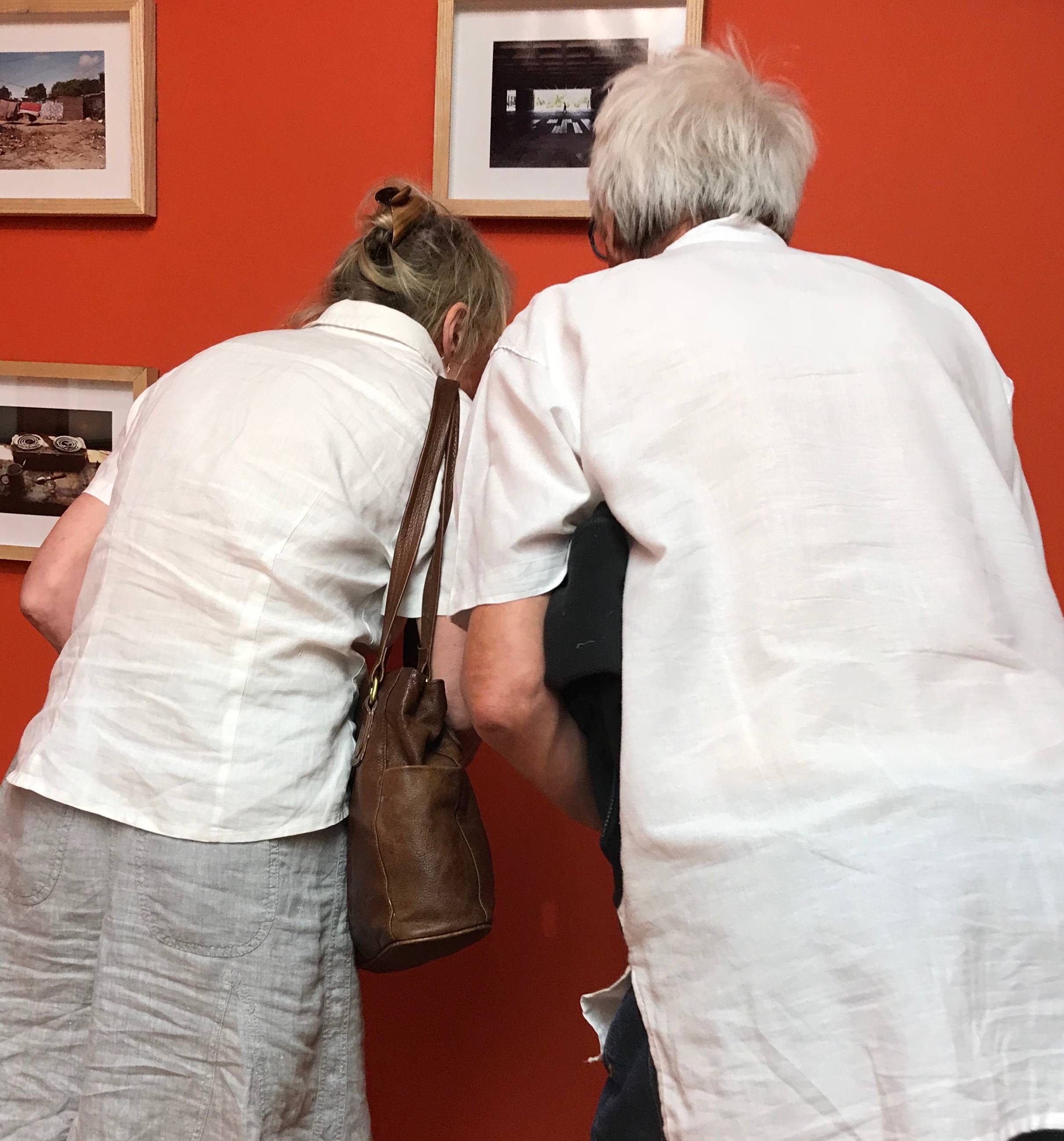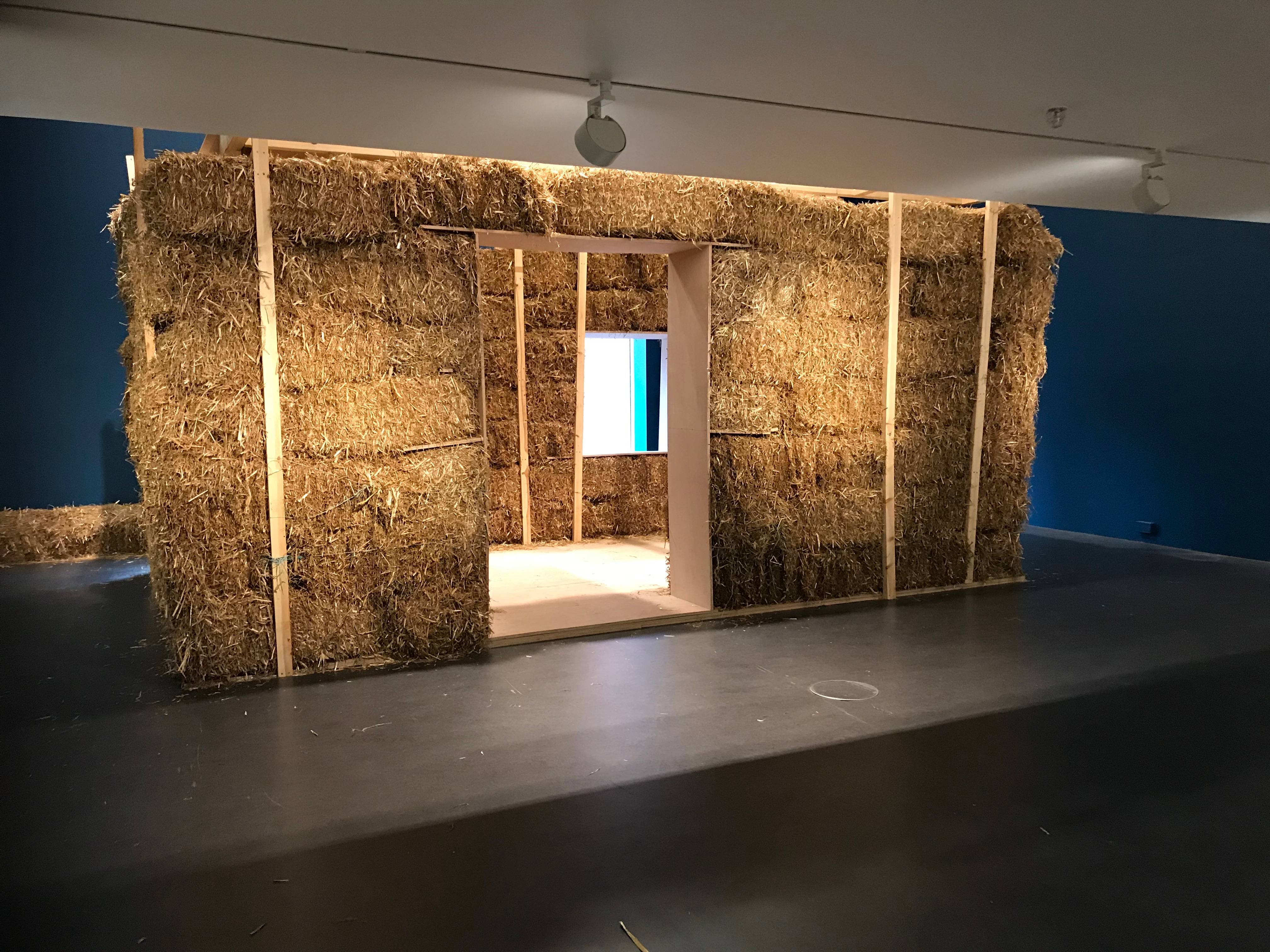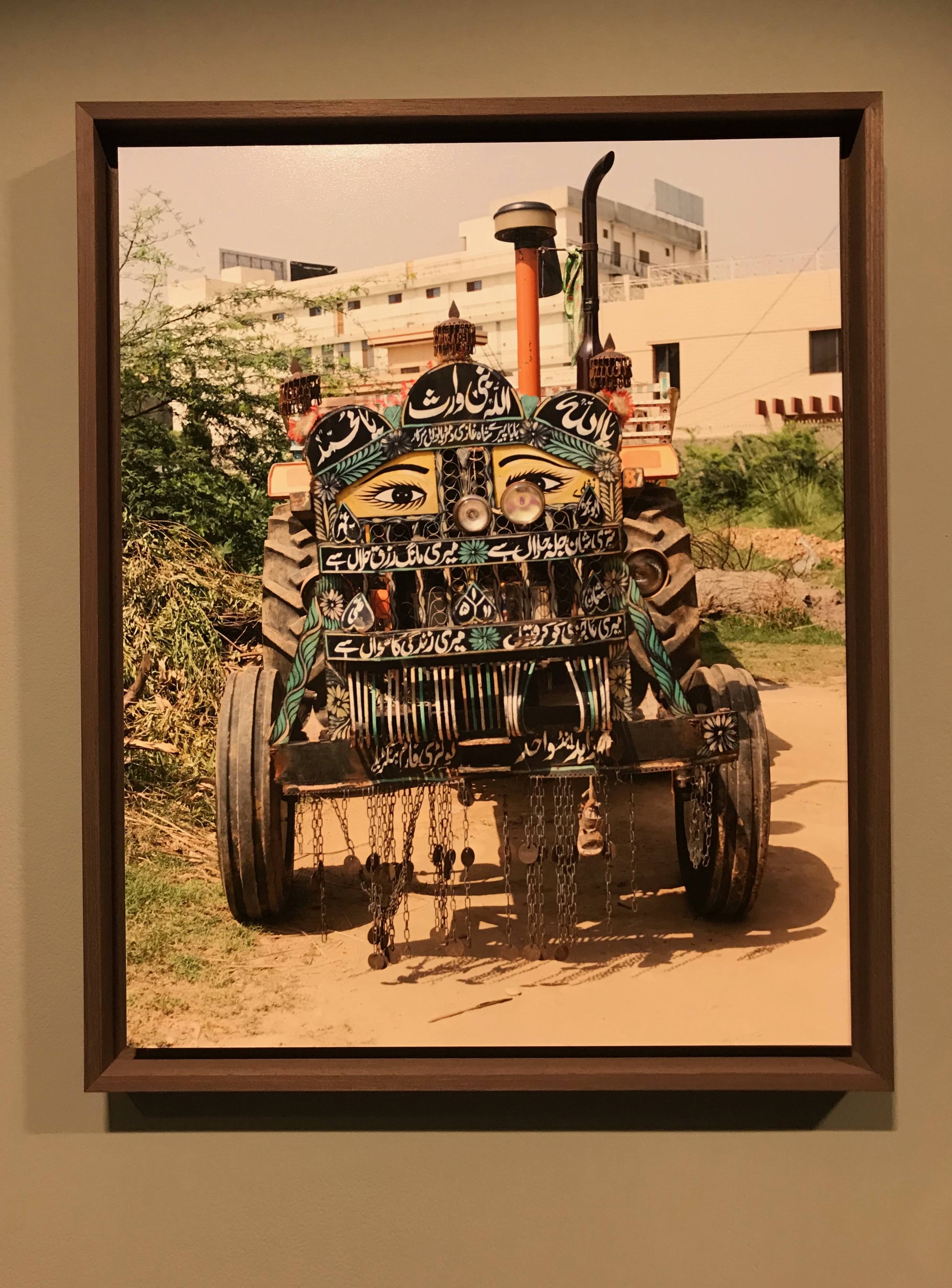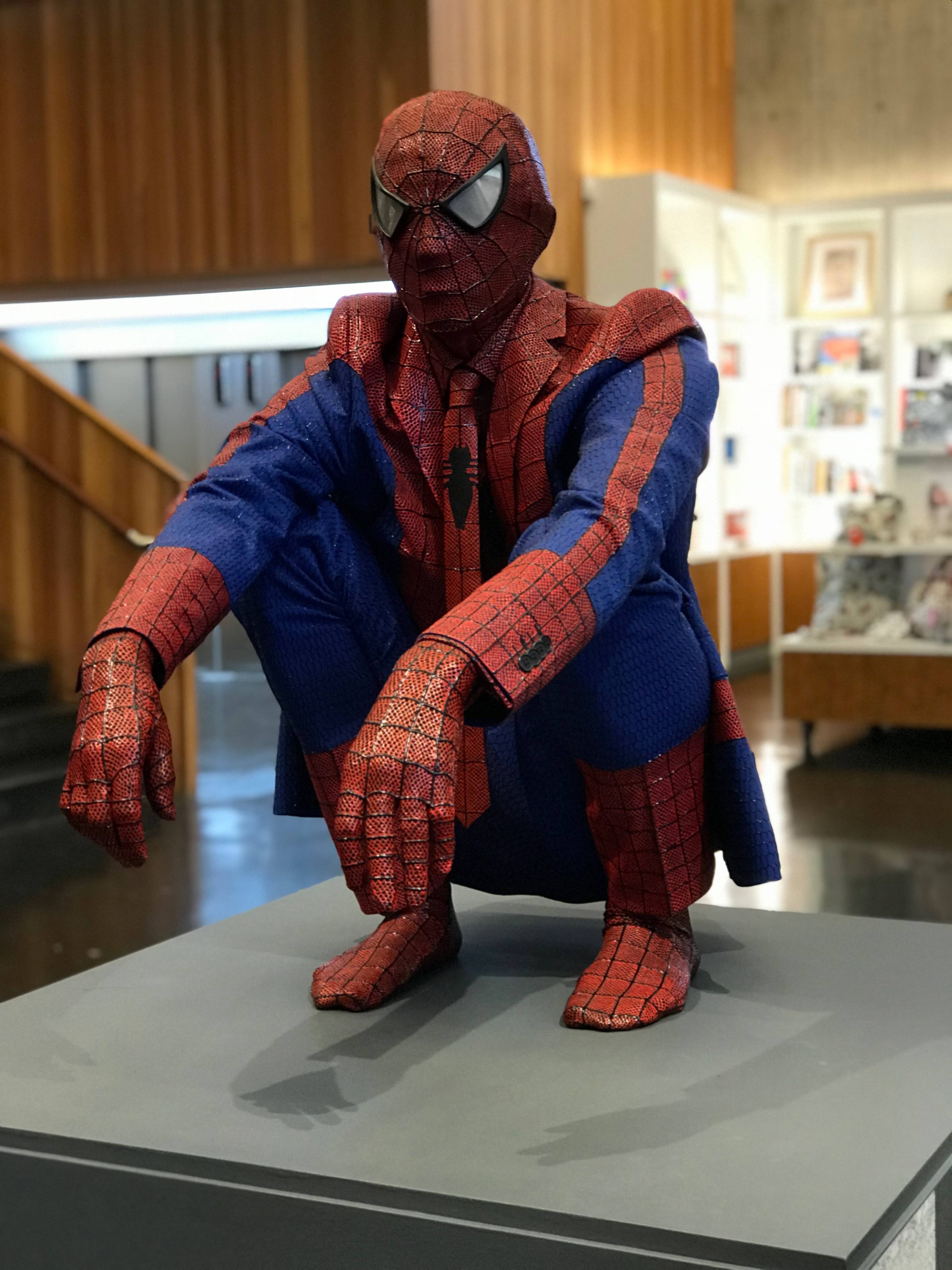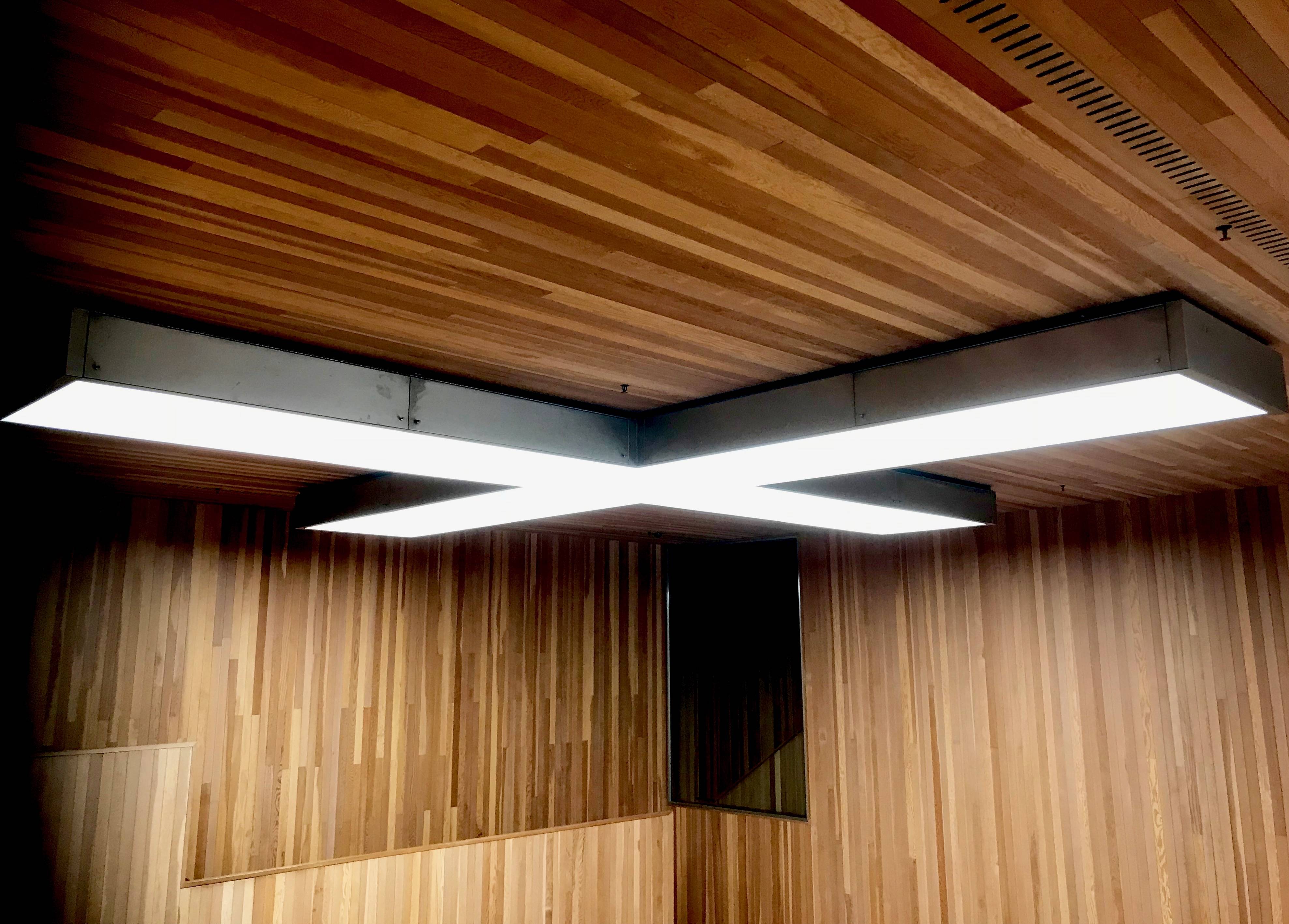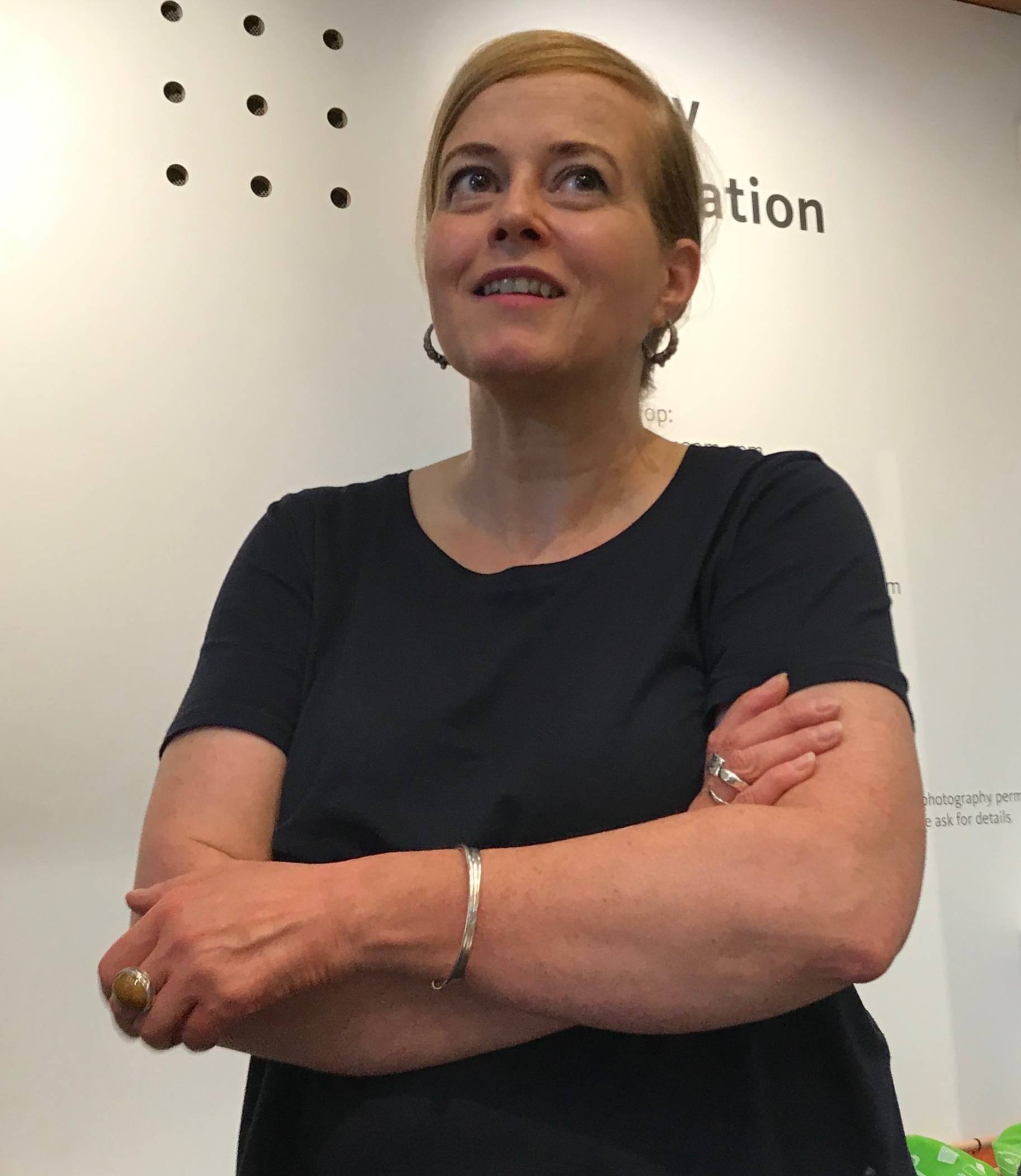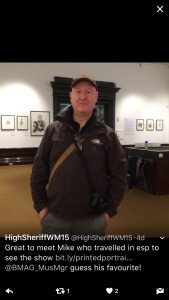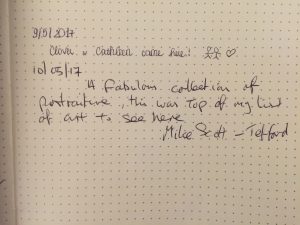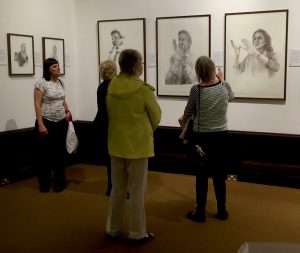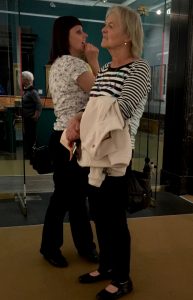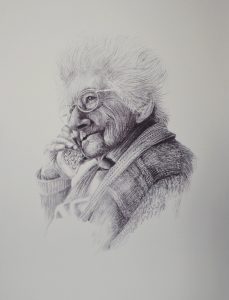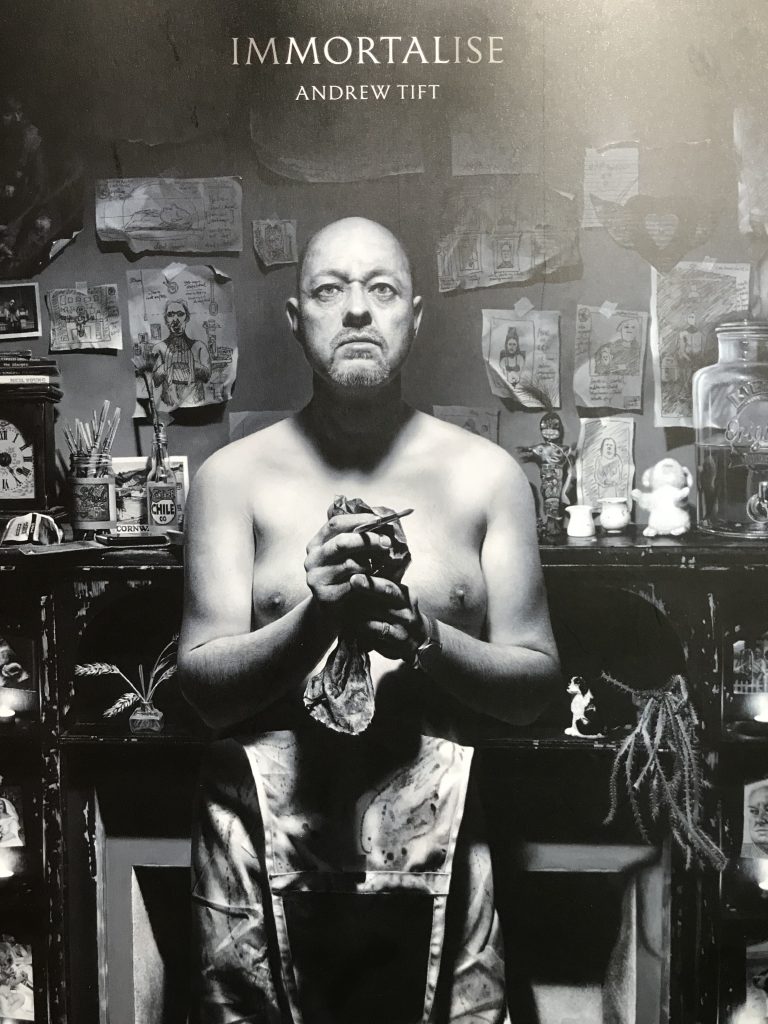
Sadly I missed the opening of Andrew Tift’s show of portraits a few weeks back, but today I headed over to The New Art Gallery Walsall. And I am so glad I did. The gallery from top to bottom was totally rewarding. Wonderful to see a show dedicated to an artist’s portraits made over 3 decades. Wonderful also to see a full wall screen of an entrancing dance film by Hetain Patel, Photographs from Pakistan by Mahtab Hussain, Cornelia Parker’s Thirty Pieces of Silver and as always the Garman Ryan collection of gems.
Andrew Tift’s portraits reflect the artist’s life experiences and people’s he has engaged with from his home town of Walsall and the places he has visited including a spell in Japan. Many of the drawings and paintings are from a hyper realist tradition and are framed in conventional rectangles as are many of his influences. However there is a piece that is not rectangular – Body Shop, It is a car door, but it is painted and hung vertically. At first unrecognisable as a functional part of a car. Like a piece of Rauschenberg pop art it reveals itself and goes on to offer more as the painted image, equally out of sync with the shape it is on, and the work of the artist that surrounds it – Japanese men in a sauna. This is from a study visit Andrew made to research Japanese car manufacturing. In 1995, he was sponsored by oil and gas giants BP to create a portrait based solo exhibition at the National Portrait Gallery titled Sayonara Pet. 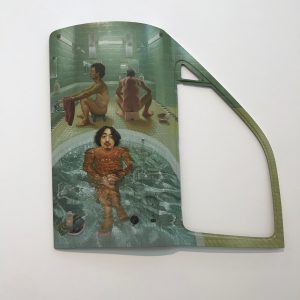 He focused on the cradle to grave work ethic in the Japanese car manufacturing industry, initially in Sunderland and shortly afterwards in Tokyo. He documented the car workers and their families. The painting in itself feels like a document of the men’s culture outside the work space. It feels like we are being offered the opportunity to share in the artist’s ‘look into’ a moment. Like much of Andrew Tift’s work the portraits are celebrations of his subjects, but also a document of their lives.
He focused on the cradle to grave work ethic in the Japanese car manufacturing industry, initially in Sunderland and shortly afterwards in Tokyo. He documented the car workers and their families. The painting in itself feels like a document of the men’s culture outside the work space. It feels like we are being offered the opportunity to share in the artist’s ‘look into’ a moment. Like much of Andrew Tift’s work the portraits are celebrations of his subjects, but also a document of their lives.
His paintings and drawings are in the main created from series of photographs that he compiles over a focussed time with his sitters. He took over 400 pictures of Kitty Godley in 2006 to help him formulate his triptych of her. She was the daughter of Jacob Epstein and first husband of Lucien Freud who painted her in 1948/9. The resultant portrait was the image used in the 80’s on a poster to advertise the collection in the old walsall art gallery and encouraged Andrew to cross the doorway into the hallowed gallery and be inspired to make paintings. He never forgot that image, even though he was surprised how small it was in the real. 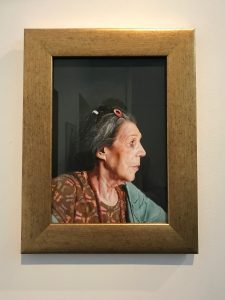 He arranged to visit Kitty in her home in Suffolk to make a triptych of black and white portraits which became a BP Portrait prize winner. He also embarked on a single portrait of Kitty in the same pose as for Freud’s portrait over 50 years ago. Its inevitable that comparisons are made between the portraits and how Kitty’s face reflected her life then and now. Andrew’s portrait is not a homage, it is his interpretation and reflection of the woman he met which feels deep and full of admiration of her life.
He arranged to visit Kitty in her home in Suffolk to make a triptych of black and white portraits which became a BP Portrait prize winner. He also embarked on a single portrait of Kitty in the same pose as for Freud’s portrait over 50 years ago. Its inevitable that comparisons are made between the portraits and how Kitty’s face reflected her life then and now. Andrew’s portrait is not a homage, it is his interpretation and reflection of the woman he met which feels deep and full of admiration of her life.
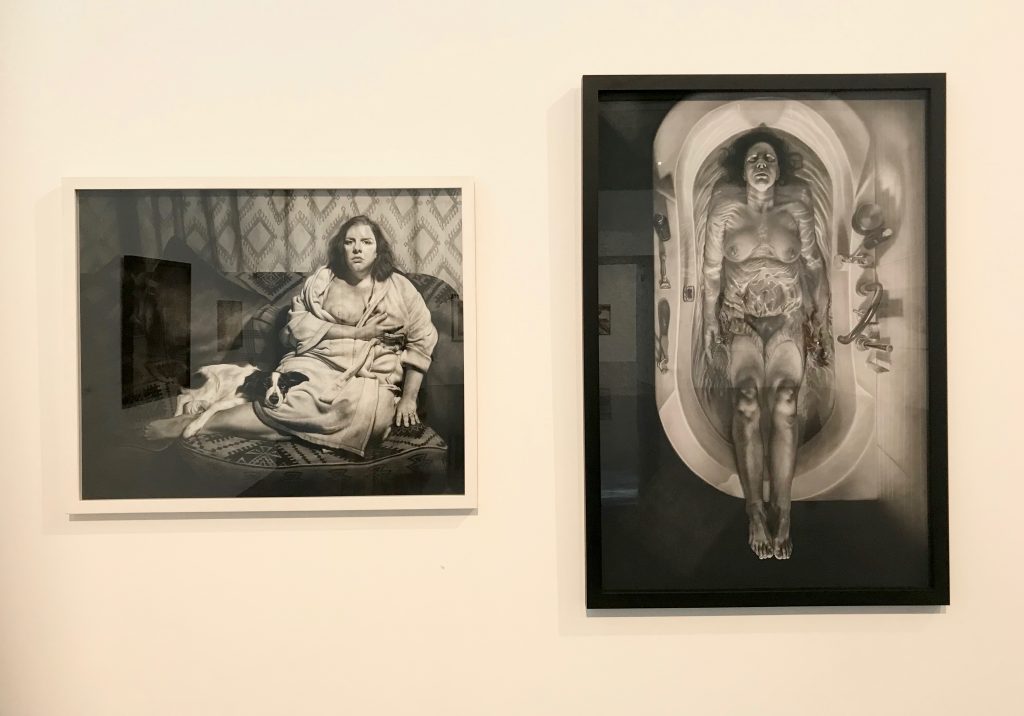
Kitty was born in Wednesbury, a town near Walsall, as was Andrew’s Wife Anne who posed for two drawings in the Show; The Bath and Woman with White dog. The latter is based on the painting by Lucien Freud of Kitty when she was pregnant. Again we are invited to make comparisons across time, but also the fact that the location of both subjects are the same: the Black Country in the West Midlands. Andrew’s large drawing seems more empathetic of his wife than that of Freud’s.
The catalogue essay, ‘Conversations with the Past by Charlotte Mullins’ 1. provides valuable insights into Andrew’s motivations and recurring foci on life and death, past and present, and portraiture itself. She refers to Tift’s contemplation of his portraits, the dedicated preparation with his sitters and the meditation of the process of drawing. She Refers to Roland Barthes concept of the good/valuable photograph capturing the ‘air’ of the subject.” Barthes cautioned, ‘if the photograph fails to show this ‘air’ then the body moves without a shadow, and once this shadow severed ….. there remains no more than a sterile body.’ 2. Tift strives to capture the ‘air’ in both photographs and paint, for it is ultimately through paint that he brings his sitters to life. The portrait is not complete for Tift without time being folded into its surface as it is painted.’ This is an important differentiation between the photograph and the drawing or painting. The photograph can capture the ‘air’ of the subject, however the skilled work and attention selection of the detail to be made by the painting and drawing artist brings something ‘more’ to the portrait and adds to the ‘air’ of the subject.
His My daughter and My Mother hang next to each other, decades between them, but painted in the same year, 2018. In the catalogue they each sit on a page next to each other with the fold between them, however the invitation to compare is even more apparent in this closer format. One is encouraged to make comparisons, and contemplate the passage of time, and the painter’s perceptions of his relationship with these two females so very close to him that he has presented to us, and himself.
As said above seeing Andrew Tift’s body of work in the New Art Gallery with the Garman Ryan collection that inspired him was a treat. The viewing was beautifully complimented by Hetain Patel’s film, Don’t Look at the Finger; Photographs from Pakistan by Mahtab Hussain and Cornelia Parker’s Thirty Pieces of Silver. My visit was helped by the brilliant gallery assistant that brought me up to date with the exhibitions and the recent acquisition of a Frank Auerbach painting from Lucian Freud’s collection made available through the Arts Council Acceptance in lieu scheme.
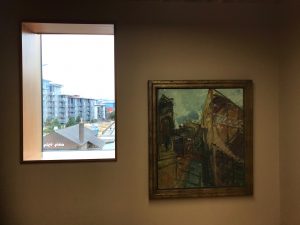
Below is a slide show from my visit.:
- Charlotte Mullins, Immortaloise. Cornerhouse publications, home 2018.
- 2.Roland Barthes, Camera Lucida, 1980, trans. by Richard Howard. Flamingo 1984. p110








